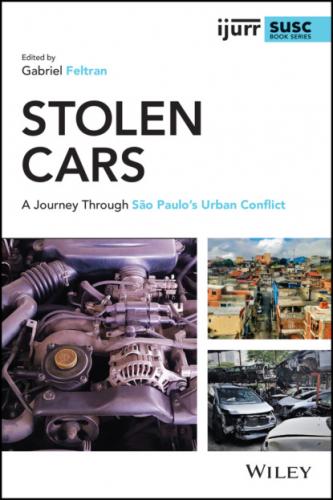Stolen Cars. Группа авторов
to clandestine warehouse
We talked at length, as a team and with our research subjects about what would be the most typical journey and therefore the most plausible for us to follow. When reliable quantitative data were available, they provided the fundamental criteria for the construction of our journeys. If insurance companies recover many more cars in São Paulo than the police do, if car thieves are young people in general from the favelas, or if the dismantlers have very heterogeneous profiles, then these were characteristics to be reconstructed during our journeys. If the police kill many car thieves in São Paulo, but if one thief is killed for every several hundred thefts or robberies, we decided that none of our five cases would end with a dead criminal – although from what we’ve seen empirically, the phenomenon should be discussed in the book. And so it was with each decision regarding the journeys presented, in an extensive analytical work over the course of more than a year. Many tests, with different versions of the journeys, led us to the structure that we present here, guided by the criteria of plausibility and representativeness.
The sheer vastness of the universe that we researched means that typical journeys do not mean major routes. There are many other plausible, possible, and empirically verified journeys for stolen cars and for supply chains in these markets that we have not reconstructed here. Our set of five cars affords us an overview of the enormous diversity of illegal markets and their connections with their legal equivalents. What’s more, the reconstruction of these journeys, based on the principles of narrative analysis, introduces readers to the same sociological knowledge that we researchers have access to. Empirical fragments and analytical debates lead us to broader theoretical questions underpinned by solid foundations.
A Collective Research Team
A team of 11 ethnographers contributed to the mixed-method research of this book, conducted between 2015 and 2019. During our fieldwork we visited places from favela bars to the financial offices of large automotive companies; we conducted research in small cities, border regions, consulates, small roads where vehicles, drugs, and weapons are transported, police intelligence centers, and large insurance companies. We conducted interviews in public agencies of the executive, legislative, and judicial branches of government, as well as religious institutions and criminal groups. We heard the testimony of thieves, Federal Police, Border Patrol Officers, CEOs, and Congressmen. We complemented our ethnographic research and journeys with analysis of secondary quantitative data produced by governments and insurers, as well as official documents, debates around changes in legislation, and so on.
We also produced primary quantitative data, especially used in Chapters 2 and 4. Young and experienced researchers worked as a team, in groups, in pairs, or individually during fieldwork, and collectively during data analysis, reviewing literature and writing chapter plans and summaries. Each one read and discussed every chapter during our workshops and the entire draft during its final stages, always sharing their critical viewpoints. We learned from one another, we laughed, fought, worked hard, and were at times frustrated with the limits imposed on parts of our research, but in the end we became much closer to one another.
With the institutional support of UFSCar and the Center for Metropolitan Studies, the daily activities of field research were complemented by weekly reading meetings, exchanges of empirical material and literature, monthly internal workshop,s and periodical workshops with external guests, focused on readings of chapter drafts. At the end of the empirical work, the material collected by our team was immense. Hundreds of field diaries, dozens of transcribed interviews, dictated field reports and WhatsApp audios with research information, as well as hundreds of documents, extracts from legislation, prints of virtual conversations, photographs, and a great deal of secondary quantitative data produced by governments and the insurance market.
The list of bibliographical references was also compiled collectively, organized by theme using organizational software. We also obtained many tables of primary quantitative data – especially regarding police auctions and homicides linked to vehicle theft – and many, many written and video press reports collected systematically throughout the research process. This material makes up thousands of pages. The densest descriptions of places, situations, people, objects and, especially, prices make up this material. The general guidelines set down for the field ethnographers in São Paulo, Rio de Janeiro, Cuiabá, Campos Verdes, Foz do Iguaçu, San Estéban, Santos, São Carlos, Berlin, London, Paris, and elsewhere was always to focus on the two questions that guided our investigation: “how does it work?” and “how much does it cost?” How can a stolen car be sold on the legal market? How is it made legal again? What does
